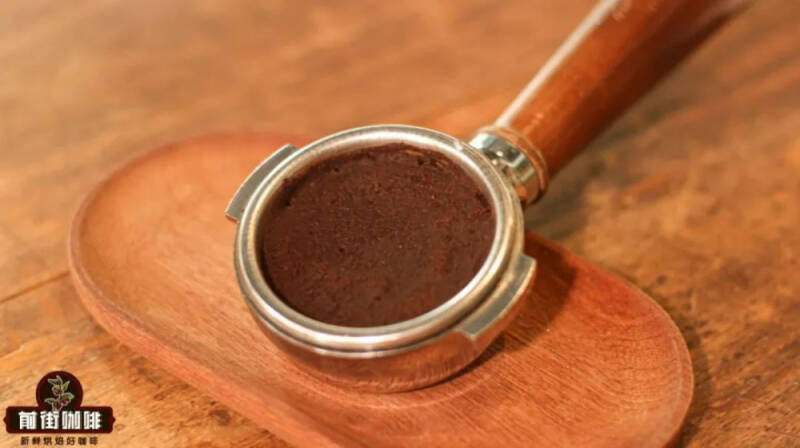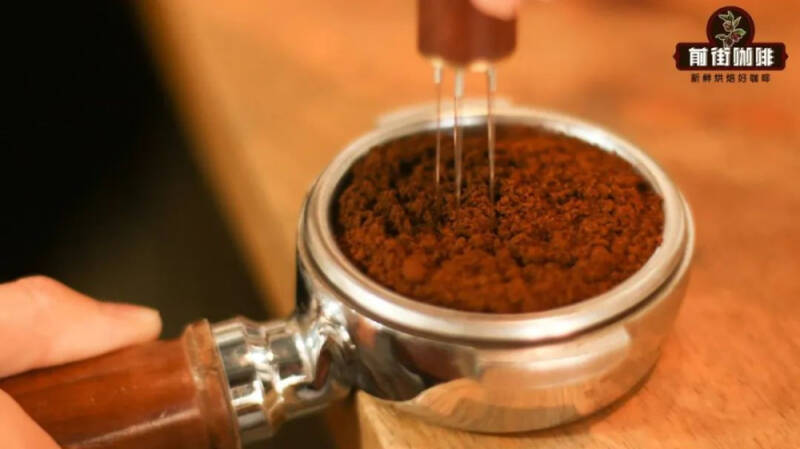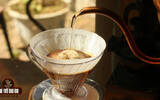How to solve the electrostatic problem of coffee powder? Can spraying water on coffee beans remove static electricity? How will the grinding quality be affected?
Static electricity, a "stumbling block" of coffee beans on the grinding road, not only makes a large number of flying powder stick to the channel, but also often brings great trouble to the extraction process because of caking.
In order to effectively "prevent" static electricity, bosses in the industry have also made a lot of efforts on all kinds of appliances, such as installing anti-static tablets on the powder outlet of Italian bean grinders and tapping back and forth with tinkling cups to solve larger pieces of powder. after receiving the powder, use a cloth powder needle to break up the lump. In addition to these, there is another method that is widely circulated on social media: sprinkle or spray water on beans.
If you like to surf the Internet as much as the front street, I believe you may have seen this in some videos: first weigh a single serving of coffee beans that need to be grinded. Find a small spoon to scoop up 1 or 2 drops of ordinary drinking water (or spray them with a spray bottle), then wet their surface and stir them properly, and finally grind the coffee beans normally. They believe that this will not only prevent coffee powder from caking, but also make the espresso taste more rich and uniform.
In fact, in the coffee grinding process, the coffee powder will be charged due to the friction between the coffee bean and the blade and the uneven charge distribution in the coffee cracking process. The finer the grinding, the more static electricity the coffee powder will produce. Static electricity will cause the negatively charged fine powder to attach to the larger particles, forming a lump of 1 mm to 2 mm, which looks like an irregular lump to the naked eye.
In theory, such clumps will not only reduce the contact surface area between coffee and water, but also cause the uneven flow of hot water in the coffee powder bed, thus disturbing the extraction rate of soluble substances, which is often called "channel effect". It is often accompanied by spatter and perforation.

At this time, by adding external water to the beans, the charge on the coffee powder can be adjusted, so as to reduce the disturbance caused by static electricity, and avoid the problem of condensation and agglomeration of coffee powder, so as to achieve more uniform extraction.
This claim was confirmed by a new paper published by the University of Oregon in Matter magazine late last year. Combined with various studies, the team pointed out that spraying an appropriate amount of water before grinding coffee beans can effectively prevent static electricity and improve the extraction rate of coffee.
The paper also mentioned that the static electricity of coffee beans with different roasting degrees will be different due to their different internal water content. For example, shallow baked beans have more internal moisture, less static electricity is obtained during grinding, and mainly tend to be positively charged, while deep baked beans are drier, get more static electricity during grinding, and tend to be negative, so it is easier to adsorb on channels or containers, as well as agglomeration, so the effect of applying RDT will be better.
Over the years, RDT, like WDT, has been favored by many family baristas who have flexibly applied this technique to their daily coffee. But we seldom see such an operation in the bar of a coffee shop. Why?

It is not difficult to find that this "sprinkling" technique can only be used in a single dose of coffee brewing, and most of it is concentrated. Because after adding water, the coffee beans are already damp, and the aromatic compounds responsible for flavor begin to decompose, which requires us to grind them quickly, otherwise the aroma will be greatly reduced.
In addition, most of the equipment produced in stores are commercial bean grinders, so baristas rarely need to think about static electricity and caking alone, because such appliances are equipped with "antistatic film" devices. And in the daily production process, compared with spending tens of seconds or even minutes to spray water for coffee beans, grinding, using cloth needles and other tedious steps, how to make a good cup of espresso more efficiently is everyone's top priority.
As a perennial "veteran" coffee maker, Qianjie believes that there are certain risks in using this method. If you do not pay attention to it and spray too much water, it is easy to make the coffee powder damp and agglomerate. Long-term mixed with water droplets, there will be the probability of rusting the cutter head. In other words, the loss may outweigh the gain if it is not properly controlled.
If we really need to use RDT for intervention grinding when making espresso, Qianjie thinks we might as well refer to our coffee industry god James Hoffmann's method: dip the spoon back into a cup of drinking water, then put the spoon handle with water droplets into the coffee beans, stir quickly a few times, and then start grinding.
-END-
Front Street Cafe
No. 10 Baoqian street, Yandun road, Dongshankou, Yuexiu district, Guangzhou, Guangdong province
Important Notice :
前街咖啡 FrontStreet Coffee has moved to new addredd:
FrontStreet Coffee Address: 315,Donghua East Road,GuangZhou
Tel:020 38364473
- Prev

The underlying logic of three-stage brewing and water injection of hand-brewed coffee! What do we need to pay attention to in sectional water injection? What is the effect of steaming?
Since Qianjie introduced the three-stage style like that in the previous article, please click "Why does Qianjie always use the three-stage style to make coffee?" "this article), it seems a bit excessive not to give a teaching article. After all, in the usual articles, Qianjie in the cooking experiment is a simple summary of water injection, friends are very difficult to root
- Next

Luxury brand Gucci sells coffee across the border?!
▲ click to follow | Daily boutique Coffee Culture Magazine Coffee Workshop Gucci brand should be heard of. This luxury brand is famous for its fashion, leather goods, perfume and so on. Last year, a Gucci Ancora fashion show shone brilliantly at Milan Fashion week.
Related
- Can artificial hand brewing replace the barista's real hand brewing coffee? What is the difference between making coffee with fake hands and making coffee with real hands?
- Can't sell it?! Coca-Cola gives up selling Costa!
- The brewing parameters of the world's top rose summer coffee, ratio, water temperature, grinding and sharing! Graphic teaching on Emerald Manor Rose Summer Brewing Method!
- Jasmine milk tea, a new cup of ice?! Netizen: Why don't you just sell ice cubes
- Is it necessary to buy a cloth powder for an espresso machine? Why should we evenly distribute the powder when extracting espresso?
- What is the grinding ratio, water temperature and powder amount needed to make Combo in Mocha pot coffee? Mocha pot is suitable for making coffee deep and light baked beans??
- Caught off guard! Starbucks '15-year-old store quietly closes!
- Naixue Drink drank a stone and claimed a claim was retaliated by the merchant?!
- What is the difference between a cake filter cup and a V60 conical filter cup? What are the advantages and disadvantages of the flat-bottomed filter cup brewing solution?
- What is the difference between fine coffee powder and medium coarse coffee powder? Do I need to sift out the fine coffee powder for making coffee by hand?

